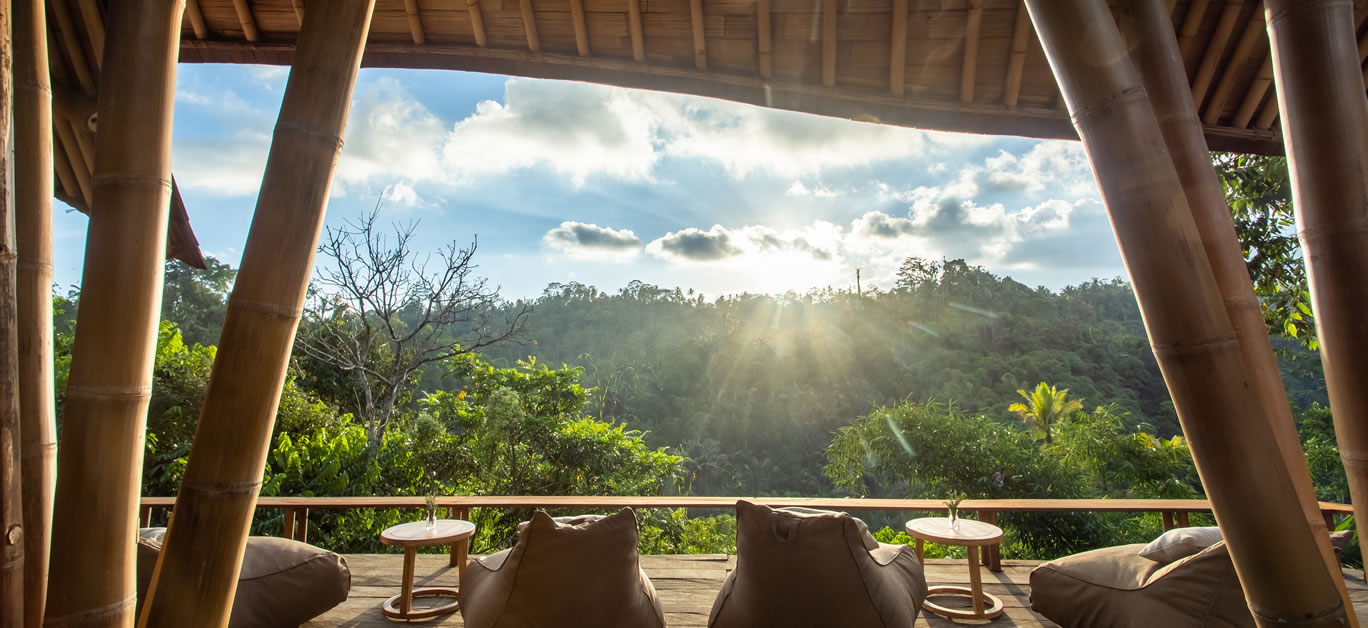We reported last month that Banyan Tree was opening a brand-new luxury resort in the depths of Ubud in Bali later this year, and now we are delving further into the intricate and carefully considered design that is at the heart of this unique escape.
Offering a sustainable ‘no walls, no doors,’ experience in the heart of Bali, Buahan, A Banyan Tree Escape encapsulates the brand’s aim of exceptional design-led experiences for its visitors while honouring traditional Balinese craftsmanship, the local culture and lifestyle.
The product of a deep understanding of its vicinity, the resort’s naked experience through the ‘no walls, no doors’ design concept reflects the agro, religious, cultural, and artisan craftsmanship of the local Balinese lifestyle, a crucial unique selling point. This philosophy also echoes the resort’s brand pillars of being connected to nature, embedded in the community, and providing a unique discovery experience that emphasizes learning.
A union of wisdom for an immersive experience
At the helm of this concept sits Banyan Tree’s head of architecture, Dharmali Kusumadi, who designed the balés (villas) and other resort facilities, bringing life to the inspired vernacular architectural approach through unique design and construction techniques. In addition, he teamed up with Gede Kresna, a recognised sustainable local architect who focuses on Balinese design and environmentally friendly architecture.
This union of wisdom was the genesis of Buahan’s design concept. Next, Gede ran a four-month study on the sociological, architectural, and cultural impact the resort would have within a one-hour radius of the site. The research would ultimately influence the resort’s personality, and at its core, guide Dharmali on how Buahan would immerse guests and provide the context of the resort’s connection to the surrounding community.
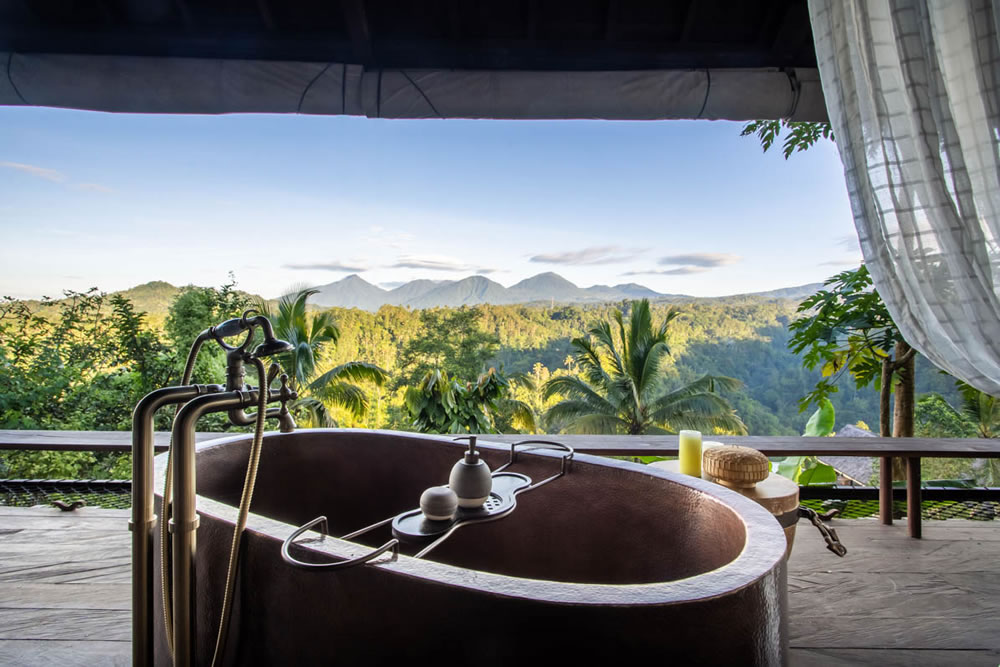
Reflecting on the start of the project, Dharmali said: “Together with Pancho, we visited almost 20 sites, none of which felt special or satisfied our criteria for a project. Regardless, we shortlisted three or four sites to show Mr Ho Kwong Ping, our chairman, who would join us in a few days. After visiting all the sites, we all concluded that none embodied the x-factor we wanted.
“On the last evening, our land agent approached us with one last site to visit. He mentioned it was a bit far but had an extraordinary view of seven mountains. Though somewhat sceptical, we agreed to visit this site the following day. At the crack of dawn, we arrived to behold a magical view of the seven mountains skirted by a forest reserve, which would disallow future developments that could ruin the view.
“The Ayung River weaved its way through dense jungle at the site’s base, embellished with a beautiful waterfall only accessible from the site. At that moment we realised, we had stumbled on the beginning of a new adventure that unknowingly, one day, would become Buahan, a Banyan Tree Escape. I often reminisce about that moment and realise how far we have come since and the bright future that lays ahead for Buahan.”
A truly Balinese inspired approach
The fundamental notion behind the balé design was to construct a dwelling space that resembles a traditional Balinese house; all individual spaces for living, sleeping, and bathing had to be incorporated within a courtyard or compound.
Due to the resort’s unique topography, the courtyard was replaced by a single-roofed open deck that houses the living room, bedroom, and bathroom with the signature ‘no walls, no doors’ concept seamlessly merging these areas and creating a thin veil between guest and nature.
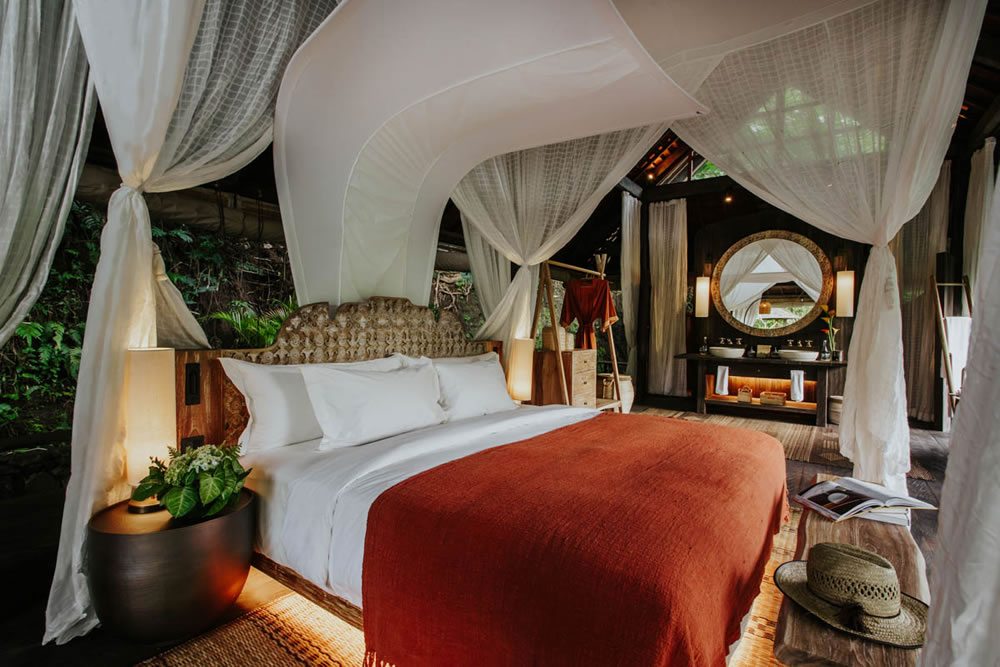
From paper to a unique topographic canvas
The above being the segue, this leads to the step-by-step process Dharmali and his team worked through in taking this concept from paper to the unique topographic canvas of the resort. With blueprints in hand, one of the first steps was identifying viable locations for each balé. The main criteria were that each location was scenic and private.
All 16 balés fit onto the enclave and adjustments were made to blend them into the landscape without compromising the criterion. Though tedious, they managed to achieve their goal on the stunning three-dimensional site.
Sustainable from birth
Incorporating a sustainable approach started right from the beginning. The resort’s design blends individual structures with flora and fauna, preserving the surrounding natural environment.
Ulin wood, aka ironwood, is a fundamental theme to Buahan’s sustainable narrative and is the backbone material in the resort’s construction. Hailing from the Kalimantan region and previously used in boat piers and fishing boat decks, the hardwood’s innate resistance to insects and wood borers has made it a choice material for bridges, piling, docks, sluices and other maritime structures. Ulin wood is readily available, and as it is a recycled material, nothing equals being able to give this marvel a second life in Buahan.
Other natural, sustainable materials, like farmed, fast-growing bamboo, is used in smaller structures on the property due to is flexibility, strength, and ability to create organic shapes reflecting forms found in nature.
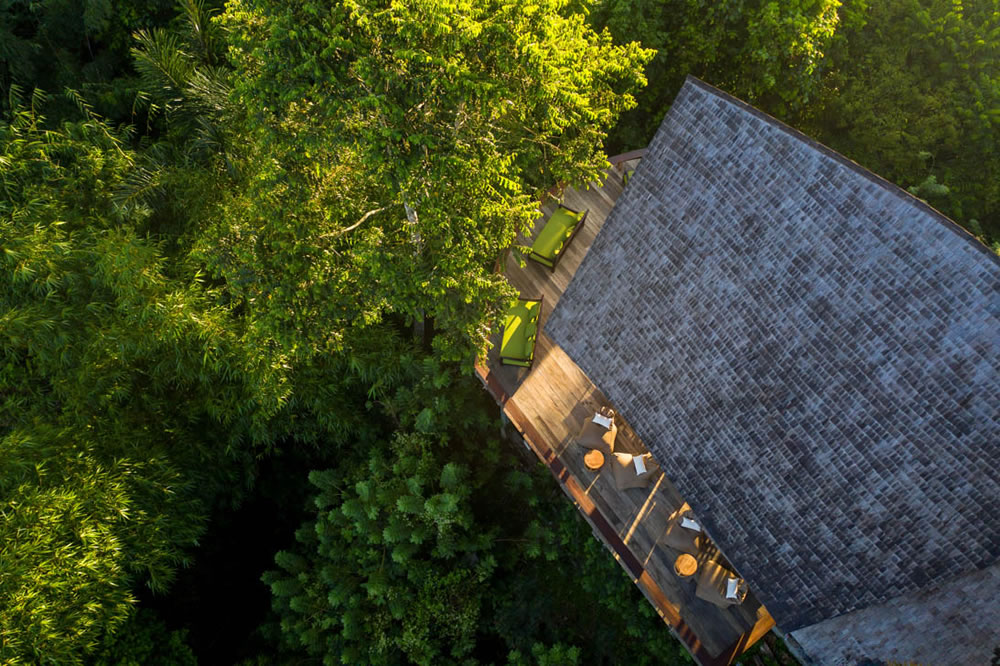
As well as using recycled materials like Ulin wood and fast-growing bamboo, the team went a step further, forgoing the use of heavy machinery in the construction phase, negating the need to clear large areas of the dense jungle for such machines to operate. This throwback to yesteryear was carried over to using traditional techniques to fasten materials together, avoiding non-recyclable materials. These actions surmise the resorts’ efforts to include sustainable practices in Banyan Tree Escape’s DNA.
Sculpted by hand
Rich in artisan tapestry, the balés have various art and design elements driving the sense of place. Craftsmen from central Java hand-crafted the copper bathtubs in every balé, each as unique as a human fingerprint. Further endearing our rooms, each headboard and the borders of the vanity mirrors were exquisitely carved by a local Balinese carpenter from the island, with non-repeating patterns across all 16 private pool balés.
Reflecting and respecting local culture and heritage
One of the core brand pillars of Banyan Tree Escape being ‘Embedded in Community,’ it is a given that a reciprocal relationship exists between property and the surrounding society. In its quest to blend in with nature and society, Buahan has made sure to have as little impact on its neighbours as possible. This endeavour is exemplified by the resort being accepted as a member of Buahan’s Subak community, a UNESCO recognised initiative that seeks to protect the cultural landscape of Bali through water management practices like the Subak System, a manifestation of Tri Hita Karana philosophy. The resort has kept and improved two traditional irrigation ‘Subak’ drains that run through the site, showing respect for the area’s original inhabitants and positively impacting their lives.
Nature’s harmony and symphony
Toja, meaning water, is portrayed as the essence of Buahan, a Banyan Tree Escape. Banyan Tree is perceived as a pioneer of the Garden Spa concept; therefore, as a brand extension, Banyan Tree Escape further depicts an indulgence of this approach, returning to the basics of sensory perception of the surrounding environment. Rather than having a centralised Spa Complex, Toja Spa’s pavilions are scattered throughout the property, celebrating an exclusive adventure in each location with unique views, sounds, sites, and smells for guests and simultaneously honouring local healing and wellbeing techniques.
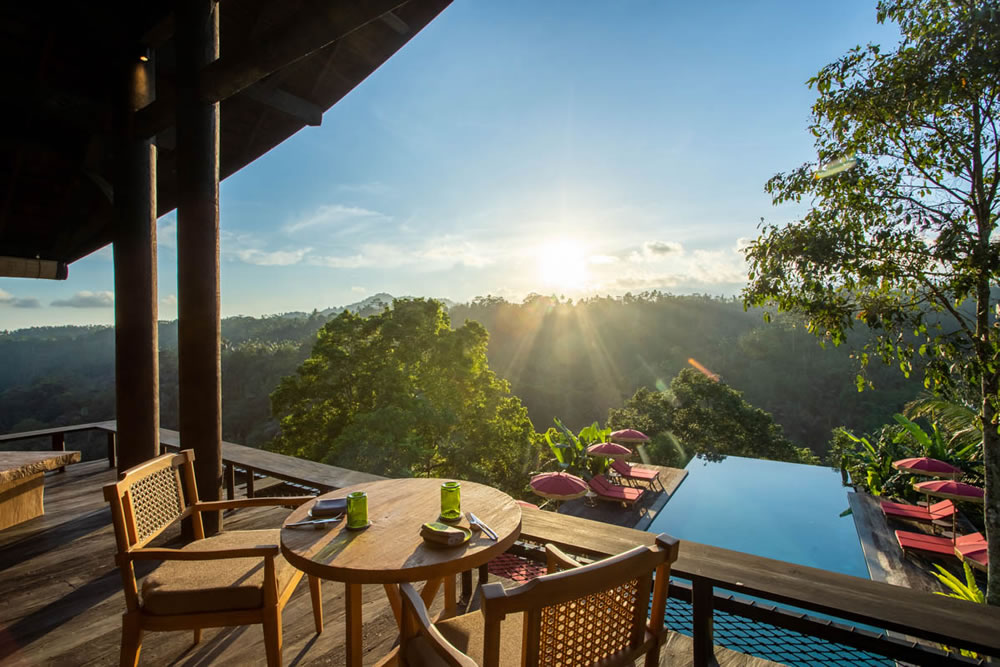
One like no other
Continuing this novel adventure, an opportunity to do something new appeared on the horizon. Though the panoramic views were wondrous, the question became, how could one capture the sounds of Buahan and visually represent them, making the invisible visible? Cue in, Singapore based studio, Parable. The new partnership garnished Parable’s sonic branding approach to develop Buahan’s logo. The team took a sound recording at the crack of dawn and, by deconstructing the data of sounds, reassembling, and translating it through cymatics – the study of visible sound and vibration, transformed the nature of sound into a visible mark seen as the brand logo today, introducing a new way of seeing.
Banyan Tree Group’s diversified portfolio of hotels, resorts, spas, galleries, golf and residences is centred on five award-winning brands (Banyan Tree, Angsana, Cassia, Dhawa and Laguna) that offer exceptional design-led experiences for global travellers of today and tomorrow.
Banyan Tree Holdings has received 2,759 industry awards and accolades since inception. It has also received recognition for its commitment to environmental protection and community development through its Banyan Tree Global Foundation (BTGF), which aligns the group’s efforts to the UN Sustainable Development Goals.
Visit Buahan, a Banyan Tree Escape’s website for more information and reservations and follow its Instagram for more stories and updates.












